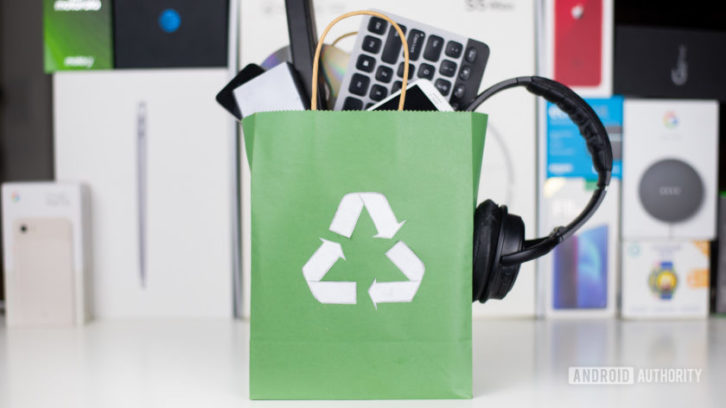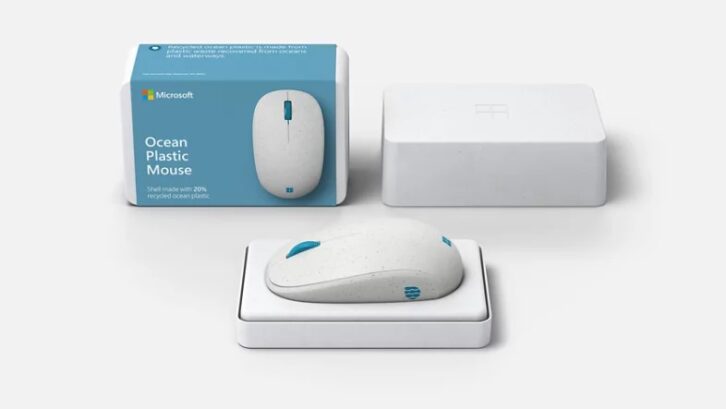
With consumer preferences changing to favor eco-friendly and sustainable product options, tech innovators have been hard at work to meet these demands, providing alternative materials and gadgets that are more green and environmentally friendly.
In fact, per a UN study, the tech industry contributes as much as 3% of total greenhouse gas and carbon emissions — more than the 2% that the entire global aviation industry produces.
From creative ways to use biodegradable materials and recycled waste gathered from the ocean or waterways, and harnessing the power of the sun to replacing traditional building materials with a layer of living plants, let’s explore the intersection where ecological consciousness and innovation meet, and take a look at some interesting green tech innovations.
The Rising Demand For Sustainable Tech Innovations
The tech industry is a powerhouse of creativity and novelty — but even these positive traits carry downsides.
For all of its virtues, tech can be a surprisingly wasteful industry. Developing and using new technology can be very energy intensive, as we’ve seen in the case of cryptocurrencies, while the material side of things often leads to enormous quantities of plastic, metal, and electronic waste being generated.
Apart from the obvious problem that waste and the large energy consumption present, today’s customers are also becoming increasingly environmentally conscious — and that shift in customer preferences is something that the tech industry can’t afford to ignore.
Now, plenty of tech and AI development companies are on a mission to revolutionize home gadgets, appliances, and the IoT in a more sustainable direction. And thanks to AI, ML, and automation in general, it’s finally possible to create green gadgets without sacrificing functionality.
There seems to be a bright future in store for this innovative space — and as time goes on, we’re likely to see even more tech solutions for environmental problems, such as the advent of smart furniture or even smart clothing, leading us to an even more holistic, integrated, eco-conscious and data-driven approach to daily living.
Although these might be relatively slow-moving changes, the need for change has been recognized — with 70% of CEOs stating that ESG efforts are a priority for their business, as they allow them to reduce costs, create greater efficiency, and address investor demand.

The Most Innovative Green Gadgets
Demand is present, and so is the will for change — but what about specific products? Let’s take a closer look at some of the more interesting and innovative tech solutions that have arisen to meet the need for sustainability.
Biodegradable Smartphone Cases
Every time you buy a new smartphone, you will most likely buy a new smartphone case to go with it. While there’s nothing wrong with wanting to protect your phone from scratches (or being dropped), purchasing brand-new plastic phone cases every time you buy a new smartphone is wasteful.
Pela smartphone cases are made from renewable bioplastics that decompose after they are thrown away. These biodegradable and compostable smartphone cases generate 80% less waste than typical plastic throwaway smartphone cases—well-being according to independent third-party verifiers.
To date, Pela customers have prevented the equivalent of 830,000 pounds of plastic bags from ending up in and polluting the ocean. And because the cases are compostable, when they are thrown away and begin to break down, they release chemicals that actually help support plant growth.

Vegetated Roofs
VR and tech are often mentioned in the same breath — but if you think we’re talking about virtual reality, you’re mistaken. No — in this case, VR means vegetated roof.
A radical alternative to your typical flat roof panels, vegetated roofs provide a natural layer of insulation to protect your home from sun and cold. Vegetated roof systems can help lower your energy bills, clean the air around your house through natural plant filtration systems, and brighten up your street.
Imagine a future where contractors use advanced roofing software to design intelligent, sustainable roof panels. This software could analyze environmental factors and energy efficiency, guiding the selection of optimal materials for an eco-friendly, high-tech vegetated roof that perfectly balances aesthetics with functionality
Getting back to the present, green roofs are already rising in popularity — with 2015 being an inflection point during which the industry grew 10% over a year. Even with the current level of technology, green roofs can reduce a house’s energy consumption by 0.7% on an annual basis.
Solar Powered Smart Gadgets
Smart home gadgets provide convenience and a greater degree of control over your surroundings. As of 2019, there were over 90,000 types of AI-powered smart home gadgets that utilized voice assistant features — and while that’s revolutionary in terms of tech, on the flip side, those gadgets have to be powered by something.
This is where solar-powered smart gadgets and IoT devices come into play. We’ve recently seen the advent of various solar-powered smart home products, including smart speakers, thermostats, garden tools, appliances, window shades, blinds, outdoor lights, and even home security systems.
By utilizing the sun, a renewable energy source that provides nearly ubiquitous supplies of energy, we can further increase the potential of smart devices and IoT for combatting climate change.
Recycled Ocean Plastic Computer Mouse

We are all familiar with the overwhelming and devastating amount of plastic waste that ends up polluting our oceans.
Rather than generate more products that may end up in the ocean or landfill, some tech companies are harnessing the power of plastic waste and transforming it into a material that can be reused and repurposed.
For example, Microsoft’s recycled ocean plastic mouse is made from plastic waste harvested from the ocean and waterways. This plastic waste is then reconstituted into pellets, which are then blended with other materials to form the hard shell of the mouse.
Currently, recycled plastic pellets form only 20% of the outer shell, but this is still a step in the right direction, transforming plastic ocean pollution from waste into a resource.
Top Benefits of Using Green Gadgets
By using green gadgets, individuals and businesses can help in the fight against climate change — by reducing greenhouse gas emissions and the amount of waste generated, we’re also improving life for ourselves by ensuring a safe environment, better air quality, and a host of other benefits.
Honing in on businesses, sustainability is in line with consumer preferences — even small businesses will benefit from this, as a clever promotion of smart gadget use can result in a plethora of benefits–from local publications looking for an interview to your Google reviews going up courtesy of resident eco-conscious tech aficionados.
In a more general sense, green gadgets increase energy efficiency. There’s no good case to be made for being wasteful when it comes to power, water usage, or other similar metrics.
Harnessing the power of the sun, water, and sustainable material alternatives means you can continue to enjoy these innovative smart home gadgets while promoting the well-being of the planet- and our continuing existence on it as a species.
Final Thoughts
Although tech innovations have certainly exacted a toll on nature to fuel the industry’s unprecedented growth, the era where the interests of tech and the interests of the environment are at odds is rapidly drawing to a close.
With an increasingly diverse array of green gadgets and appliances, which are only becoming more appealing either due to novelty or cost-savings, one thing has become apparent — we don’t just have a trend or a fad on our hands, but a long-term paradigm shift that will only grow in importance in relation to various industries for years to come.
See also: Interpret: Smart Clothing May One Day Replace Smartwatches And Smartphones













